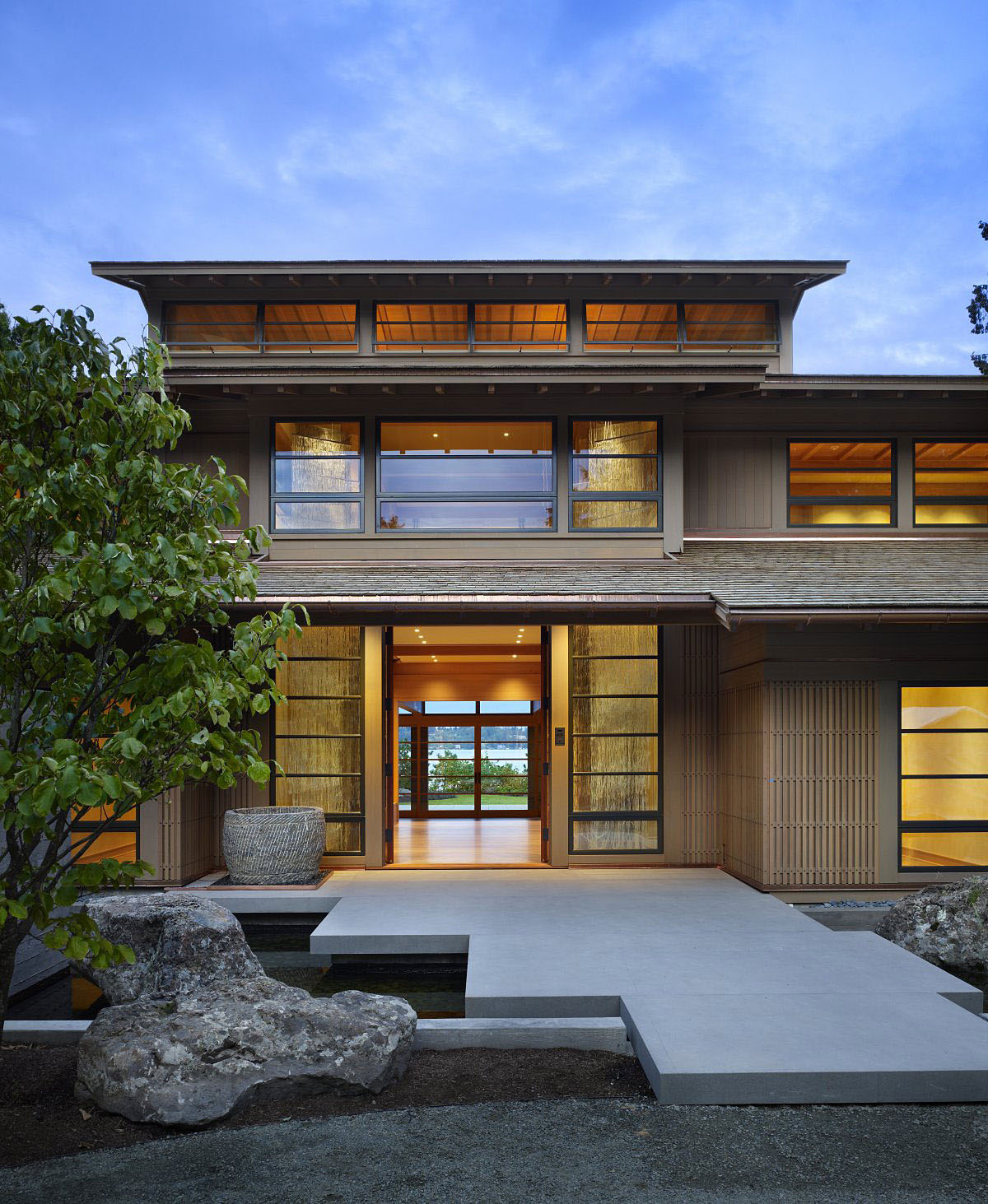Table Of Content

Temple carpentry, along with tea house carpentry, is considered the pinnacle of the craft tradition in Japan. A body of knowledge accumulated over centuries by craftsmen who habitually refine every element of their trade isn't picked up easily. The house sits higher than the farmland, so water collected from the roof and ponds all drains down to irrigate the farm land. At home, he inspires his Watts neighbors with his low-cost, DIY garden full of native plants, herbs and food. The capacities may decrease depending on other ancillary requirements or social distancing guidelines.

The General Term
Now that you’ve grasped the basics, it’s time to put your knowledge to practical use. In your quest to learn Japanese, it's only natural to want to engage in conversation and connect with people from different backgrounds. Being able to ask someone their nationality is a great way to start a conversation.
Who operates as the general contractor? ⌄
The word うち (uchi) is another term that can be used interchangeably with いえ (ie). It can also mean home or house and is commonly used to refer to one’s own home or family. Another word that specifically focuses on the individuals or family dwelling within a home is かてい (katei | 家庭).
More From the Los Angeles Times
Remember, though, this isn’t rustic; avoid making large visual areasall the same shade of brown, as the natural vibe you’re looking for will belost. We usually work with a local contractor in any site too far from our shop for a daily commute. We will help the client find a local contractor who knows the local building officials, and the best local subcontractors. Unless the client is sure of the contractor they will hire, we like to be involved to help them vet the contractor.
What furniture was present was muchlower than what Westerners might expect, such as chabudai tables, which can be used comfortably while sitting on theground. The garden fell into disrepair during World War II but was refurbished with support from the San Marino League. In 1968, the garden was expanded with a bonsai collection and Zen Court of plants and raked stones. The Yokoi shōya house was built around 1700 in Marugame, says Hori, and was the family’s private residence as well as a kind of community center for the village. In Japanese, there are various terms to describe different types of houses.
Learn more vocabulary on the app!
They lived on the floor, without furniture, and without a place to rest one’s back. They were dimly lit and barely heated by a single wood-burning hearth (irori), also used for cooking. Houses were modest and utilitarian, designed to use limited resources. They required about half the floor area that western houses require for the same functions. They provided a cool, shaded escape from hot summers, and basic shelter from the elements to get occupants through cold winters.
Example #1: how to say “house” in Japanese
It not only refers to the physical structure of a house but also includes the family unit or household as a whole. Unlike in the West, where people often move homes to seek better job opportunities, in Japan, staying close to one’s hometown and family is highly valued. Therefore, the phrase “uchi” is also used to refer to one’s hometown, which is considered the primary source of identity and belonging. It’s important to note that the Japanese language has different levels of politeness and formality.
When it comes to speaking broken Japanese, it's essential to understand that it can be seen as a sign of effort and willingness to learn, but it should be used with caution and respect. In this guide, we will explore how to express the concept of broken Japanese in both formal and informal ways, along with some tips and examples to help you navigate this linguistic territory. In Japanese, the word for “house” is written as “家” and pronounced as “ie.” It’s a simple yet crucial term to grasp, as it forms the foundation for discussing various aspects of living in Japan. Ie represents not just the physical structure but also the concept of home, family, and personal space.
Denver firm that contracts a lot of Colorado houses acquired by Japanese homebuilder for $4.9 billion - Colorado Public Radio
Denver firm that contracts a lot of Colorado houses acquired by Japanese homebuilder for $4.9 billion.
Posted: Thu, 18 Jan 2024 08:00:00 GMT [source]
If your joints allow you to embrace low profile furniture,lowered couches and tables in a small room are common in Japan, not to mentionthey do well to not overcrowd the space. Go with neutral-colored woodenfurniture designed in clean, precise lines to bring the look of your entirehome together. Japan has mastered the art of seamlessly blending moderntechnologies and lifestyles with traditions and culture dating back more than30,000 years. One way this culture is upheld is through the architecture oftheir homes, which reflect values that continue to guide the country.

Understanding the concept of a house in Japan goes beyond the physical structure of a dwelling. It is a reflection of the deep respect for nature and harmony in Japanese culture. Engage in conversations with Japanese speakers and don’t be afraid to use the words you’ve learned. Suki Desu is the largest informative database about Japanese culture and the Japanese language.
This 320-year-old Japanese house has been relocated to the Huntington, and you can step inside it - Time Out
This 320-year-old Japanese house has been relocated to the Huntington, and you can step inside it.
Posted: Wed, 18 Oct 2023 07:00:00 GMT [source]
Home plays a crucial role in Japanese holidays, as many festivals and celebrations involve family gatherings and feasts. When it comes to translations, “home” can be translated into several Japanese phrases such as “自宅” (jitaku), “住まい” (sumai), and “生家” (sei-ka). These phrases carry different connotations, so it’s essential to choose the appropriate one depending on the context and situation.
In a Japanese home, there are specific furniture and elements that are unique to Japanese culture. In the entryway, called a genkan, you can find a shoe rack (下駄箱 – getabako), a shoe horn (靴べら – kutsubera), an umbrella stand (傘立て – kasa tate), and slippers (スリーパー – surīpā). In the living room, there may be a traditional Japanese table with a heater underneath called a kotatsu, a sofa (ソファ – sofa), a television (テレビ – terebi), a bookshelf (本棚 – hondana), and a rug (絨毯 – jūtan).
Our work is somewhat more expensive than standard housing because it requires more careful labor, but we can work with you to try to meet your budget. We have overseen the design and construction of structures as simple as elegant garden seats and gates to projects as complex as multi-million dollar houses, board rooms and executive suites. Adjacent to the dirt-floored rooms were the places where the family lived and worked. The wood-framed walls and beams were planed to feel as soft to the touch as satin sheets. Sliding walls with windows covered in rice paper and glass opened to reveal exquisite gardens, enjoyed only by visiting dignitaries who entered through their own special gate.
As mentioned earlier, bring in plants that are strong shadesof green. You might have a bamboo or bonsai plant, or a philodendron forsomething leafier. Outdoors, use azaleas or cherry blossoms for a pop of color,Japanese maples to cover large areas, and niwakior “garden trees” that can be sculpted for a unique look. If you’re not in the process of designing a new home butstill want to tidy up your space, focus on downsizing. Some people tackle thisby season, some by room, and some all at once; there are plenty of tips andtricks to minimize your material possessions. Traditional Japanese architecture makes use of – andhighlights – nature in the immediate area.

No comments:
Post a Comment